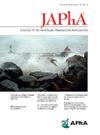Assessing pharmacy workflow to enhance the integration of HIV prevention services
IF 2.5
4区 医学
Q3 PHARMACOLOGY & PHARMACY
Journal of the American Pharmacists Association
Pub Date : 2025-08-11
DOI:10.1016/j.japh.2025.102903
引用次数: 0
Abstract
Background
Community pharmacies are well-positioned to expand access to HIV prevention services, including pre-exposure prophylaxis (PrEP), by offering convenient, community-based care in areas with high HIV burden. Yet, the operational realities of incorporating oral PrEP into existing workflows, particularly within independently owned pharmacies operating under restrictive prescribing policies, remain underexplored. Workflow assessments and task modeling offer an opportunity to inform scalable strategies for service integration.
Objective
To examine community pharmacy workflow patterns and resource use to inform the development of a real-world model for integrating PrEP services into independent pharmacy settings, while ensuring service quality and reducing stigma.
Methods
Structured workflow, resource observations, and hierarchical task analysis (HTA) were conducted in 7 independently owned community pharmacies in high-HIV-prevalence areas of Atlanta, Georgia. Observers recorded routine staffing patterns, task flow, and infrastructure availability. HTA was used to map medication dispensing tasks and identify realistic entry points for PrEP-related services such as counseling, education, and dispensing.
Results
Pharmacies exhibited consistent core dispensing processes but differed in staffing configurations, space for private consultations, and capacity to support additional services. The HTA-informed analysis yielded a composite model aligning PrEP service elements with existing workflows to minimize disruption and support patient-centered care.
Conclusion
This study offers a formative approach to aligning PrEP delivery with routine pharmacy operations through direct workflow analysis and task modeling. The resulting model reflects the unique context of independently owned pharmacies in the U.S. Southeast and provides a practical foundation for future implementation efforts in similar settings.
评估药房工作流程以加强艾滋病毒预防服务的整合。
背景:社区药房处于有利地位,可以通过在艾滋病毒高负担地区提供便利的社区护理,扩大艾滋病毒预防服务的可及性,包括暴露前预防(PrEP)。然而,将口服PrEP纳入现有工作流程的实际操作情况,特别是在限制性处方政策下经营的独立拥有药房,仍未得到充分探讨。工作流程评估和任务建模提供了一个机会,为服务整合提供可扩展的策略。目的:研究社区药房的工作流程模式和资源使用情况,为将PrEP服务整合到独立药房环境中的现实世界模型的开发提供信息,同时确保服务质量并减少污名。方法:采用结构化工作流程、资源观察和分层任务分析(HTA)方法对乔治亚州亚特兰大市hiv高流行区7家独立拥有的社区药店进行分析。观察员记录了日常人员配置模式、任务流程和基础设施可用性。HTA用于绘制药物调剂任务,并确定prep相关服务(如咨询、教育和调剂)的现实入口点。结果:药店表现出一致的核心配药流程,但在人员配置、私人咨询空间和支持额外服务的能力方面存在差异。hta的分析产生了一个复合模型,将PrEP服务元素与现有工作流程结合起来,以最大限度地减少干扰并支持以患者为中心的护理。结论:本研究通过直接的工作流程分析和任务建模,提供了一种将PrEP交付与常规药房操作相结合的形成性方法。由此产生的模型反映了美国东南部独立药店的独特环境,并为未来在类似环境中的实施工作提供了实践基础。
本文章由计算机程序翻译,如有差异,请以英文原文为准。
求助全文
约1分钟内获得全文
求助全文
来源期刊
CiteScore
3.30
自引率
14.30%
发文量
336
审稿时长
46 days
期刊介绍:
The Journal of the American Pharmacists Association is the official peer-reviewed journal of the American Pharmacists Association (APhA), providing information on pharmaceutical care, drug therapy, diseases and other health issues, trends in pharmacy practice and therapeutics, informed opinion, and original research. JAPhA publishes original research, reviews, experiences, and opinion articles that link science to contemporary pharmacy practice to improve patient care.

 求助内容:
求助内容: 应助结果提醒方式:
应助结果提醒方式:


